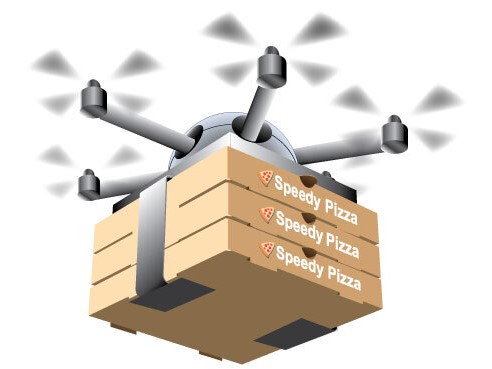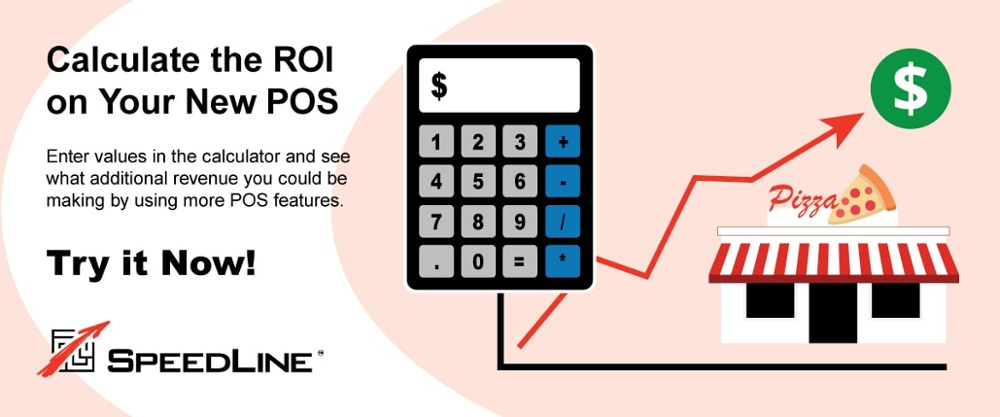Automation and robotics is an area that holds a lot of potential for restaurants as it continues to grow. In fact, the food robotics market is worth almost $1.5 billion and should grow to over $3.4 billion by 2027.
It’s time to take advantage of this golden opportunity and improve your business with robotics and automation>. This list can help you integrate automation technology into your restaurants and discover why it's a good idea for you.
Tackle Scheduling Issues
The line between enough staff and overstaffing is so fine that even Charles Blondin (famous tightrope walker) would struggle to walk it. So how can you possibly get it right every time?
This is where the use of some automation can come in handy. By using a POS system with an integrated labor scheduling tool, you can achieve that perfect level of labor for every shift.
With the help of projected sales reports, your POS system can give you an accurate picture of what your sales will look like for each shift. It can also go into more detail to include a breakdown of what percentage of sales will come from deliveries, carryouts, and dine-ins. This data then allows the system to calculate how many employees it will take to cover this amount of work.
Relieve Workers From Tedious and Repetitive Tasks
There are certain jobs within a kitchen that no one wants to do, such as washing dishes or even taking orders. If you can find a way to take these tasks out of the hands of human employees, then you’ll be doing yourself, your staff, and your business a big favor.
With automated technology, your employees can focus on other things like making the pizzas and serving the customers. Plus, by using robots to handle simple tasks, you can deliver a more consistent experience.
For example, you won’t have to worry about human-error mistakes when employees take orders or re-enter third-party orders. And with an automated reservation and seating-management system, you can better manage wait times.
Lower Hiring and Training Costs
High turnover rates often plague the restaurant industry. In fact, 59% of owners say that hiring, training, and retaining staff is their biggest challenge. If this is something that you struggle with, then using automated technology may be the answer you’ve been looking for.
By using robots and automated devices to take over positions like dishwasher or cashier, you can help to reduce your staffing costs. This can save you thousands, or even tens of thousands of dollars every year. Not to mention, robots can’t quit, call in sick, or arrive at work late. So you won’t have to worry about filling empty positions on short notice or hiring a new employee every few months.
Training new employees will also be much easier when your store has automated technology like SpeedLine. This is because it has the ability to automatically prompt for add-ons or recognize coupons that customers qualify for. This helps ensure that employees are properly taking orders every time without the need for extensive training.
When compared against the cost of replacing an employee in the restaurant industry, the savings become quite clear. Onboarding a new hourly employee costs nearly $6,000. Meanwhile, the cost of purchasing and installing an automated device can be as little as $1,000 to $2,000 a year.
On top of this, there's the fact that you won't need to pay the automated device. Plus, you also get the added benefits of not needing to make/show training videos, re-enter third party orders, or take orders by hand.
The Dark Side of Automation
It isn’t all sunshine and rainbows. There is also the fact that robots are often only programmed to do a single task. So every task from preparing the dough to cooking the pizza is going to need its own device. Whereas, these tasks can be easily accomplished by a single person.
With a human staff, you can have employees float around and perform the tasks of many different positions. This comes in handy during busy times when the number of orders suddenly surges. But with an automated system, this isn’t going to be possible because these devices can often do one thing and one thing only.
There is also the risk of doing too much too fast when it comes to automating and having your overhead skyrocket without the profits to back it up. Since putting these automated systems in place is not cheap, it is best to do a little at a time to avoid excessive operating costs.
Fail to heed these words and you risk becoming the next Zume. They went from being a 100% automated $4 billion pizza enterprise to a broke business that laid off most of its staff and nearly shut down in only two months.

Where to Start?
This all sounds great, but where do you start when it comes to making your restaurant more automated? This is something that will depend on where you currently are in your technology journey.
If you’re still using the traditional pen and paper system, then it’s best to start small by investing in something more basic or entry-level.
Essential Automated Technology for Pizza Places:
- Self-Serve Kiosks
- Automated Industrial Dishwasher
- Integrated Online Ordering
- Contactless Payments
If you already have an integrated POS and online ordering system for your automation needs, then you'll want something bigger.
What Automated Pizza Products Are Currently Available?
Not all forms of food industry automation are what you might consider a “robot”. For example, things like automatic dishwashers or POS systems are an important form of kitchen automation. But, there are also far more advanced products out there that you can incorporate into your business.
For example, Kiwibot and DoorDash have both been using automated delivery robots for quite some time. These robots operate in select locations can deliver food orders to a customer’s front door without any human help.
But this is still very limited technology. For example, Kiwibot mainly operates on large university campuses and DoorDash robots have a max speed of 4 mph.
Meanwhile, other businesses have been looking to the sky as their path to better automated delivery options. The latest example of this is Domino's, which recently did a successful test run of their new delivery drone.
Amazon also recently received their FAA approval to operate their delivery drones. While these drones aren’t planning on carrying perishable food items, they show the possibilities for the food industry.
It isn’t just delivery either; there are also plenty of opportunities to get advanced robotic products inside of the kitchen as well. The new pizza robot system from Picnic or the pizzaiolo robot from Ekim are the perfect examples of this. While not perfect, these advanced systems represent an exciting opportunity to get a more autonomous restaurant.
One Step at a Time
Before you can get to the point of having an automated pizza store, you'll need to start with something more basic. Once you’ve built a strong base of automation, then you can continue building a restaurant that relies more heavily on automation. Soon enough, you’ll be able to have fewer staff members, lower employee turnover, faster service times, and a more consistent product.
Whether you’re looking to get integrated third-party ordering or an advanced real-time delivery dispatch system, SpeedLine has the perfect tool for you.
Posted on Wed, Sep 30, 2020 @ 08:09 AM.
Updated on April 27, 2023 @ 6:53 PM PST.


